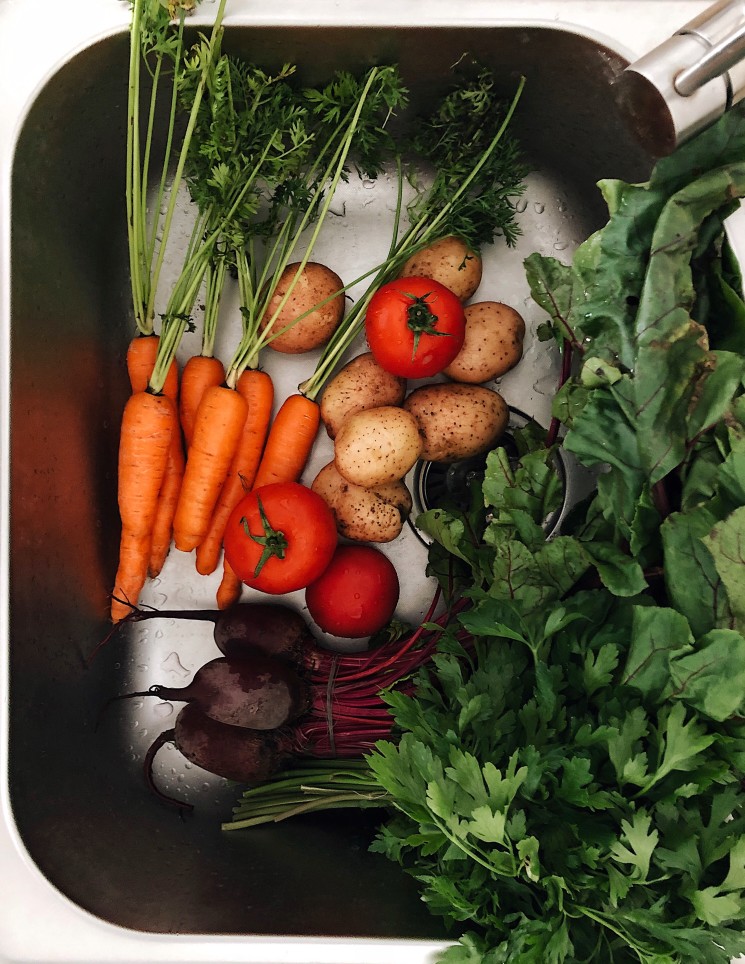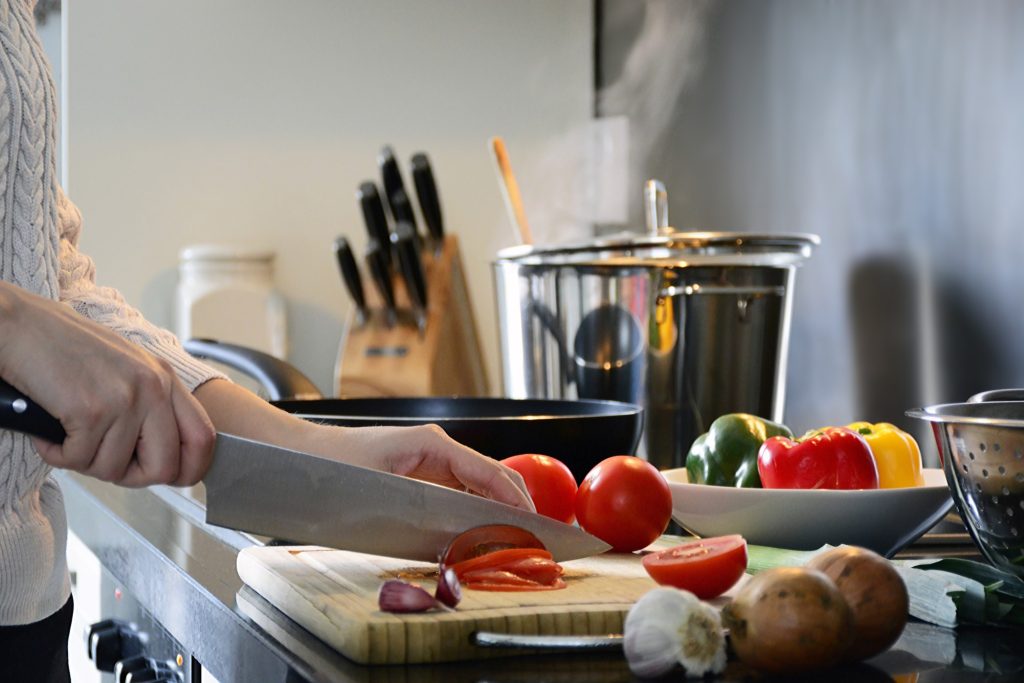I really enjoy watching the Food Network. Lately, I’ve been watching the show “Chopped”. The premise of the show requires chefs to compete in three different rounds, using mystery ingredients in a basket. If the chef succeeds in creating a delicious dish, they can move on to the next round.
If not, they are chopped. I love watching this show because it really showcases how to create delicious food using what you have on hand. Well, they had a couple of episodes devoted entirely to using food that most people waste or throw out.
Not only did I learn how to utilize food I was wasting, but I discovered I had been preventing waste over the years, by developing a few habits of my own in the kitchen.
6 Ways to Reduce Waste In The Kitchen
The key to preventing waste in the kitchen is, EXAMINE the types of food YOU use REGULARLY and FIND ways to reduce waste.
1. Use the Whole Onion
I use A LOT of onions. Most of the meals, I prepare for my family, require chopped onions. So, over the years I’ve developed a habit of chopping the entire onion. If the recipe only calls for half of an onion, I simply put the rest in a freezer bag and freeze it. However, you don’t have to chop the entire onion to freeze it.
You can slice it in half, and freeze the unneeded onion (with the skins on). Onions cooked with skins on make for a delicious and rich-looking stock. *I also do this with bell peppers.
2. Use Broccoli Stalks
Most people throw out broccoli stalks or simply purchase broccoli stems only. I like to purchase broccoli bunches, stalks, and all. I always use the stalks, just as I would the stems. However, I DO separate the stalks from the stems. Broccoli stalks are deliciously chopped and steamed or roasted.
Quite often I will chop the broccoli stalks, bag them, and freeze them. When I need them, I steam them and toss them in cheesy garlic mashed potatoes or seasoned rice. This is ESPECIALLY handy when I don’t want to make a big meal but I want to have veggies on the dinner table.
3. Use Overly Ripe Bananas
We eat a lot of fresh bananas. Unfortunately, the last banana in the bunch always seems to be rejected, once I bring in a new bunch. Don’t throw out that last banana!! Knowing no one is going to eat it, I’ve developed a habit of sticking the whole banana in the freezer. In fact, I always find little “stow-away” bananas tucked away, here and there, in the freezer.
I learned forever ago that super ripe bananas make for the BEST banana bread. So, when I want to make banana bread, I pull 4 or 5 frozen bananas out of the freezer. I thaw them and then they slide right out of the skin. They are slimy and gross but PERFECT for banana bread. There is really no excuse for throwing out bananas!
4. Leek Greens, Herb Stems, Green Onion Stalks, Celery Leaves

These are all vegetables that most people throw out. But, they are ALL so useful. My suggestion is to develop a habit of separating what you need NOW and what you can use LATER. When I buy fresh veggies, I chop up what I need and then put the unused parts, in a freezer bag, LABEL IT (trust me), and then put it in the freezer. It’s also handy to keep a “stock bag” in the freezer, designated just for veggie parts you can use just for stock.
5. Use Bread Heels
I think it’s safe to assume everyone buys bread. I think it’s also safe to assume that most people throw out the heel. Years ago, I got into the habit of tossing bread heels (the last hot dog or hamburger bun) into the freezer.
Then the kids and I would take the bread to a duck pond and feed the ducks with it. As the kids have grown, we stopped going to feed the ducks, but I kept freezing the last bit of bread. I started using the frozen bread bits to make my own bread crumbs.
6. Bones
I’m pretty certain most people toss out roasted chicken carcasses. By the time you are done getting all the meat off the bones, the last thing you want to do is save it. Again, this is all about developing habits. Ham, Turkey, and Chicken bones are all perfect for hearty soups and broths.
I always bag, label, and freeze the bones. Then when I want to make soup, I toss the bone in the pot (along with all the other stock bits that have been saved). The meat AND the bone not only give soup stock flavor but, the collagen in bones thickens the stock. It’s what sets homemade soup apart from the canned stuff.
I hope some of these suggestions help you find ways to reduce the kitchen waste in your own family.
